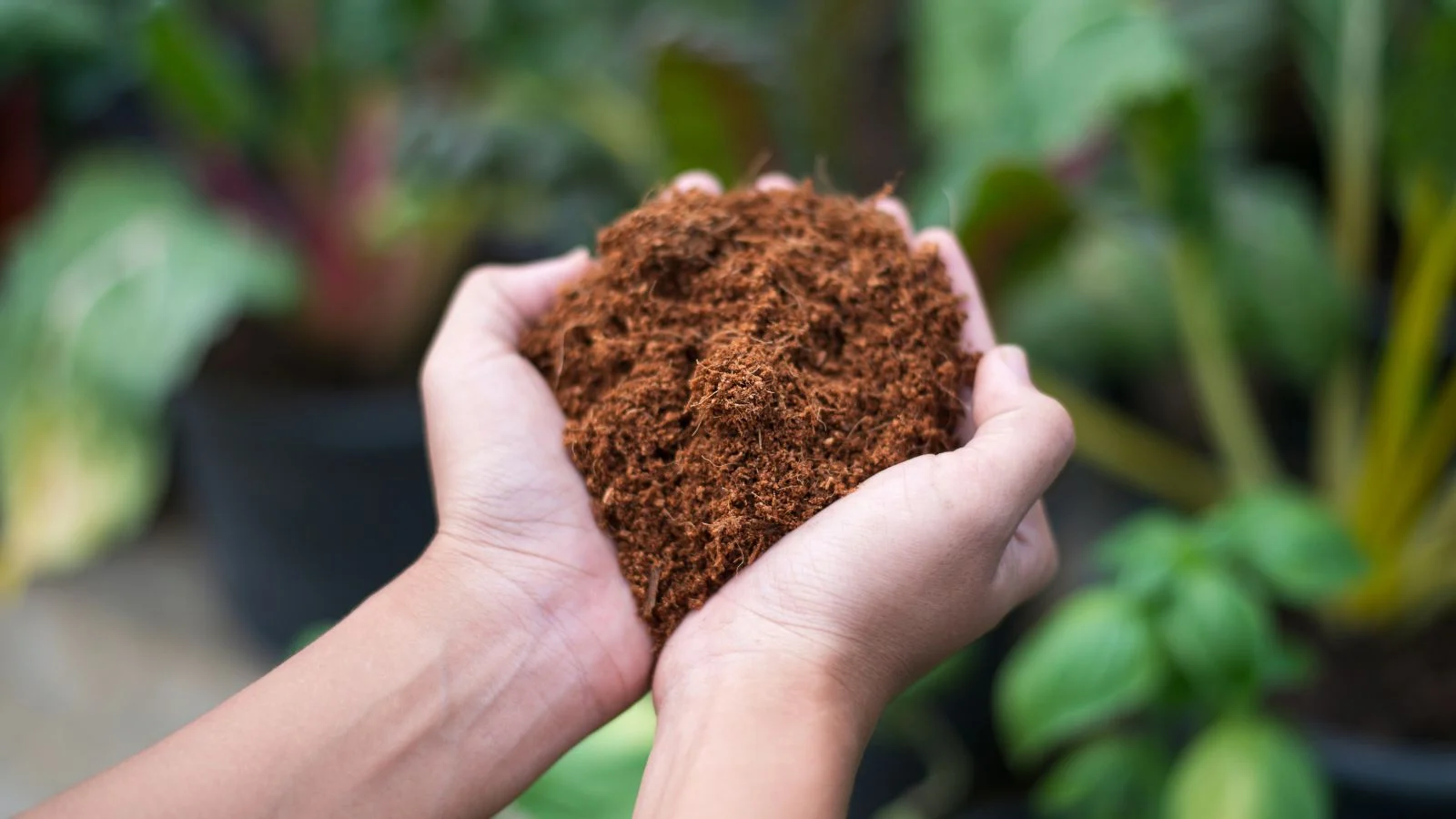
What is Coco Peat?
Coco peat, also known as coir pith or coir dust, is a spongy, fibrous material derived from the husk of coconuts. It is a byproduct of the coconut fiber extraction process and is widely used as a soil amendment or a soilless growing medium. When coconut husks are processed to extract coir fibers for ropes, mats, and brushes, the remaining dust-like substance—coco peat—is collected, cleaned, and often compressed into bricks or blocks for easy transport. When hydrated, it expands into a soft, fluffy, soil-like medium rich in organic content.
Applications of Coco Peat in Organic Farming:
Organic farmers use coco peat in various ways:
- Potting Mixes: Mixed with compost, vermicompost, or manure.
- Soil Amendment: Enhances the texture of clayey or sandy soils.
- Mulching: Helps retain soil moisture and control weed growth.
-
Hydroponics:
Used as a base medium in organic hydroponic setups.
It is also widely used in nurseries, polyhouse farming, and vertical gardens, thanks to its versatility.
Tips for Using Coco Peat in Organic Farming:
Always Combine with Nutrients:
Coco peat is low in inherent nutrients, so pair it with compost, biofertilizers, or organic manures.
Maintain Proper Drainage:
While it holds water well, excess water can still stagnate without proper drainage.
Monitor EC and pH Levels:
Choose high-quality coco peat with low Electrical Conductivity (EC) and ideal pH (5.5–6.5).
Frequently Asked Questions (FAQs):
- Is coco peat certified for organic farming?
- Can coco peat be used in open-field organic farming?
- Does coco peat provide nutrients to plants?
- How long does coco peat last?
- Can I make coco peat at home?
Yes, many coco peat products are OMRI-listed (Organic Materials Review Institute) or certified for use in organic agriculture. Always check the label for certifications.
Absolutely. Coco peat can be mixed into field soil to improve water retention and structure, especially in sandy or heavy clay soils.
Coco peat is not rich in nutrients on its own. It acts more as a growing medium. Nutrients need to be supplied through compost or organic fertilizers.
Coco peat can last up to 3–5 years with proper maintenance. It can be reused across multiple growing seasons after cleaning and sterilization.
Yes, if you have access to coconut husks, you can dry, shred, and sift the fiber to create coco peat. However, it requires time and effort to ensure quality.
Copyright 2024 © Digisnare Technologies LLP . All Rights Reserved

